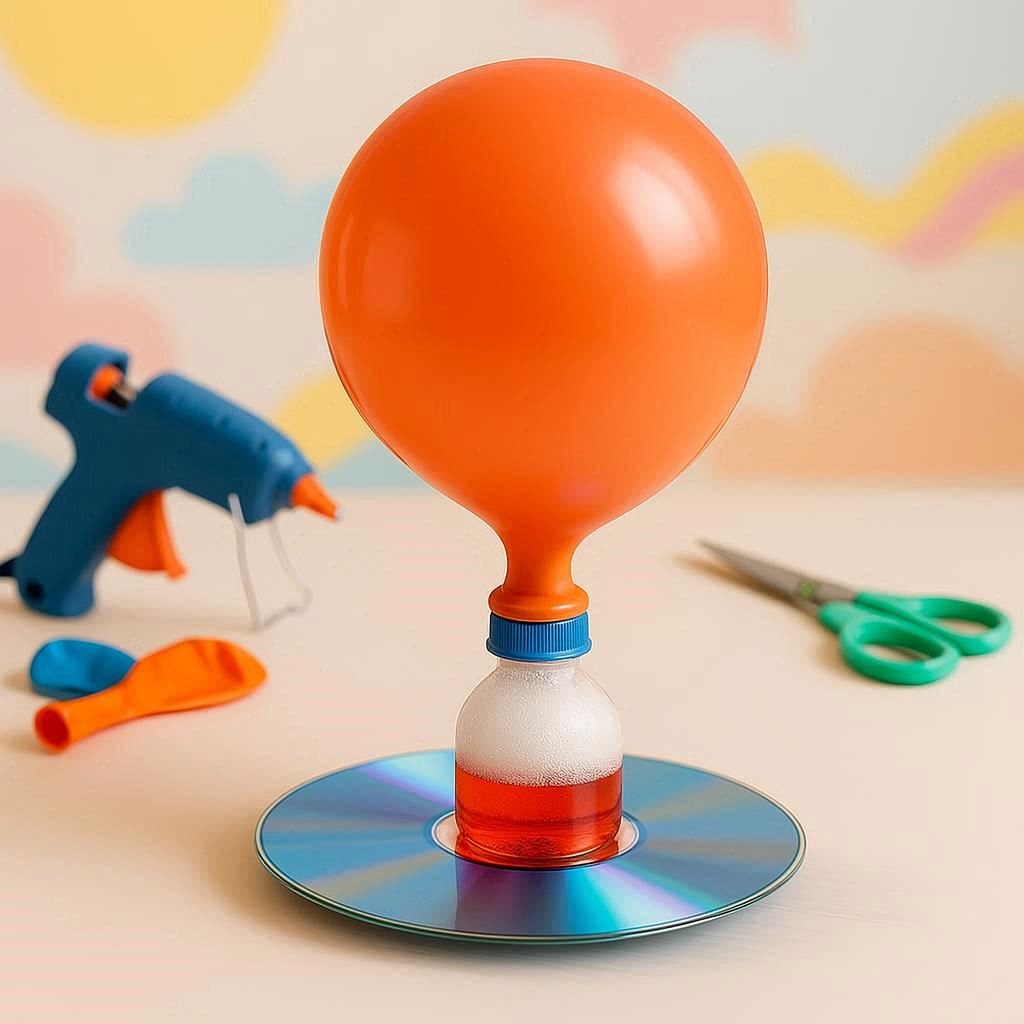The Balloon Skewer Challenge has become a popular science experiment and party trick that never fails to amaze. At first glance, it seems impossible—how can you push a sharp object like a skewer through a balloon without it popping? Yet, with the right technique, it’s not only possible but also reveals some fascinating insights into the properties of latex. In this blog post, we’ll dive into the science behind this surprising phenomenon and explore why latex is far stronger than it appears.
The Basics of the Balloon Skewer Challenge
The Balloon Skewer Challenge involves inflating a latex balloon, stretching it taut, and then carefully inserting a skewer or long needle through both sides. While it seems like the skewer should puncture the balloon and cause it to burst, the balloon instead remains intact. This is due to a combination of the balloon’s elasticity, the molecular structure of latex, and how pressure is distributed across the surface of the balloon.
To set up the challenge, you’ll need a few simple materials:
-
Latex balloons: These are the best choice for this experiment because they are more elastic than other types of balloons. Latex is naturally stretchy and flexible, which is crucial for the challenge to work.
-
A skewer or needle: A wooden or plastic skewer works well, but you can also use a long needle. The key is to use a sharp object that can penetrate the latex without causing immediate damage.
-
A way to inflate the balloon: You can either blow up the balloon manually or use a pump to ensure it’s fully inflated and stretched taut.
The Science Behind the Balloon Skewer Challenge
The Balloon Skewer Challenge is a great example of how materials science and physics can create seemingly impossible outcomes. Let’s break down the key factors that make this challenge work:
1. The Elasticity of Latex
Latex is a natural material derived from the sap of the rubber tree. It’s known for its high elasticity, which means it can stretch significantly without breaking. When you inflate a latex balloon, the molecules stretch out but don’t snap or tear. This elasticity is what allows the balloon to stretch around the skewer without puncturing.
The elasticity of latex is due to its molecular structure. Latex is made up of long polymer chains that are cross-linked, creating a flexible yet strong material. When the balloon is inflated, these chains stretch out, but they don’t break because the cross-links allow the material to return to its original shape when the pressure is released.
2. Pressure Distribution
When you insert the skewer into the balloon, the pressure from the skewer is distributed across the surface of the balloon. The latex stretches around the skewer, creating a seal that prevents air from escaping. This is similar to how a punctured tire can sometimes continue to hold air if the puncture is small enough and the pressure is evenly distributed.
The distribution of pressure is key to the success of the challenge. If the skewer is inserted too quickly or at the wrong angle, it can create a concentration of pressure that causes the balloon to tear. But when done slowly and carefully, the pressure is spread out, allowing the balloon to stretch without breaking.
3. The Role of Tension
The tension in the balloon’s surface is another important factor. When the balloon is fully inflated and stretched taut, the surface tension helps to resist the penetration of the skewer. The tension also helps to distribute the pressure evenly, reducing the chances of the balloon bursting.
Surface tension is a property of liquids, but in the case of a balloon, it’s the elastic properties of the latex that create a similar effect. The skin of the balloon acts like a stretched rubber membrane, providing a barrier against the skewer.
4. The Psychology of the Challenge
While the science behind the Balloon Skewer Challenge is fascinating, it’s also worth considering the psychological factors that make it so compelling. Our brains are wired to expect certain outcomes based on our experiences. When we see a sharp object being pushed through a delicate-looking balloon, we naturally anticipate that the balloon will pop. When it doesn’t, it creates a sense of wonder and curiosity that makes the challenge so engaging.
This psychological aspect is why the Balloon Skewer Challenge is often used as a teaching tool in science classes. It’s a simple yet effective way to introduce students to the concepts of materials science, physics, and the importance of understanding the properties of everyday objects.
How to Perform the Balloon Skewer Challenge
Now that we’ve explored the science behind the Balloon Skewer Challenge, let’s walk through the steps to perform it successfully. With a little practice, you’ll be able to amaze your friends and family with this simple yet impressive trick.
Step 1: Prepare Your Materials
-
Latex Balloons: Start with high-quality latex balloons. Avoid using balloons that are too thin or old, as they may be more prone to breaking.
-
Skewer or Needle: Use a sharp, clean skewer or needle. A wooden skewer is ideal because it’s less likely to slip and cause unnecessary damage.
-
Pump or Lung Power: You can either blow up the balloon manually or use a pump to ensure it’s fully inflated.
Step 2: Inflate the Balloon
-
Inflate Fully: Inflate the balloon until it’s stretched taut but not to the point where it’s about to burst. The balloon should be firm to the touch but still have some give.
-
Check for Weak Spots: Before attempting the challenge, inspect the balloon for any visible weak spots or imperfections. If you notice any, it’s better to use a different balloon.
Step 3: Prepare the Skewer
-
Sharpen the Skewer: Make sure the skewer is sharp and free of any debris. A blunt skewer is more likely to tear the balloon.
-
Position the Skewer: Hold the skewer at a slight angle, with the tip pointing downward. This will help you insert it smoothly into the balloon.
Step 4: Insert the Skewer
-
Locate the Insertion Point: Choose a point on the balloon where the latex is evenly stretched. Avoid areas that are excessively thin or stretched.
-
Insert Slowly and Carefully: Gently press the skewer into the balloon, moving slowly and steadily. Apply even pressure, but avoid applying too much force, which could cause the balloon to burst.
-
Push Through Both Sides: Continue pushing until the skewer exits the other side of the balloon. You may feel some resistance, but with the right technique, the balloon should hold its shape.
Step 5: Observe and Enjoy
-
Inspect the Balloon: Once the skewer is fully inserted, inspect the balloon to ensure there are no signs of damage. The balloon should still be inflated and holding its shape.
-
Share the Amazement: Show off your success to friends and family. The Balloon Skewer Challenge is a great way to entertain and educate others about the fascinating properties of latex.
The Real-World Implications of Latex Strength
The Balloon Skewer Challenge is more than just a fun trick; it also highlights the remarkable strength and versatility of latex. Latex is used in a wide range of applications, from medical gloves and condoms to industrial seals and gaskets. Its unique combination of elasticity, strength, and resistance to chemicals makes it an essential material in many industries.
Understanding the properties of latex can also inform our approach to materials science and engineering. By studying how latex behaves under different conditions, scientists can develop new materials with improved strength, elasticity, and durability. This knowledge can be applied to everything from medical devices to aerospace components, where materials need to perform under extreme stress.
Conclusion: The Surprising Strength of Latex
The Balloon Skewer Challenge is a simple yet powerful demonstration of the surprising strength of latex. By understanding the science behind this seemingly impossible feat, we gain a deeper appreciation for the materials that surround us every day. Whether you’re a scientist, a teacher, or just someone who loves a good trick, the Balloon Skewer Challenge is a reminder that there’s often more to everyday objects than meets the eye.
So next time you encounter a latex balloon, remember that it’s not just a flimsy party decoration—it’s a testament to the incredible properties of natural materials. And who knows? With a little practice, you might just become a master of the Balloon Skewer Challenge, astounding your friends and family with the power of latex.
Final Thoughts
The Balloon Skewer Challenge is more than just a trick; it’s a lesson in the importance of understanding the materials we use. By embracing curiosity and exploring the science behind everyday phenomena, we can uncover new insights and develop a deeper appreciation for the world around us. So, go ahead, give the challenge a try, and experience the surprising strength of latex for yourself.
And remember—next time you’re at a party or celebration, don’t just pop the balloons; take a moment to appreciate their hidden strength and the science that makes them so remarkable.



